|


Germany (1920)
Source:
Herbert Engmann † / Hamburg
|
Herbert Engmann was born in 1920 in the postwar era of Germany. His family was from Silesia and came to Hamburg, because his father put out to sea in the merchant marine for 16 years, and, therefore, had developed close contacts within this city. His father was spared from war deployment because at the outbreak of war his ship was interned in the Cameroon. He spent five years in internment captivity on the Isle of Man. Herbert was born and raised in Hamburg/Eimsbüttel. In 1926, he entered elementary school in the city section of Eppendorf, and he finished in 1934. After this he started the training as machinist at the firm of "Bauermeister", which produced chocolate [praline] machines. In 1937 he volunteered for the navy. The four year long training period [at the factory] was followed by half a year of Arbeitsdienst [compulsory labor service] and then he was called up for service in the navy.
|
|
|
Light Cruiser Karlsruhe
Layed down: |
27.07.1926 |
Launch: |
20.08.1927 |
Commission: |
06.11.1929 |
End: |
09.04.1940
(sunk) |
Displace-
ment: |
6.700 ts |
Size: |
174 m x 17 m |
Crew: |
850 men |
|
The light cruiser Karlsruhe sailed as a training ship for officer cadets on five world cruises till 1937. Afterwards she became part of the recon forces and was deployed during the Spanish Civil war. During the invasion of Norway the Karlsruhe was hit by a British submarine torpedo. The crew abandoned the sinking ship and the cruiser was finally sunk by her own escort ships.

|
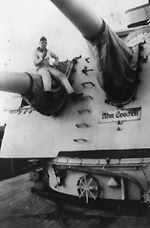 He started his 6 months basic training in Saßnitz on the Island of Rügen, and this was followed by another half year at the naval school in Kiel. In October 1939, Herbert boarded the cruiser Karlsruhe as seaman - machinery. This ship was docked in Wilhelmshaven for reconstruction after having completing a world cruise. The ship sailed to the Baltic Sea in November 1939 for sea trials, subsequently it returned to Wilhelmshaven to complete the work.
He started his 6 months basic training in Saßnitz on the Island of Rügen, and this was followed by another half year at the naval school in Kiel. In October 1939, Herbert boarded the cruiser Karlsruhe as seaman - machinery. This ship was docked in Wilhelmshaven for reconstruction after having completing a world cruise. The ship sailed to the Baltic Sea in November 1939 for sea trials, subsequently it returned to Wilhelmshaven to complete the work.
Then the Karlsruhe sailed as part of the Norway mission where she sustained a troublesome torpedo hit which caused the total failure of the machinery equipment and the ship was lost. The crew was transferred to torpedo boats which brought them back to Germany. Because of the temporary secrecy regarding the sinking, the crew was disembarked into a barrack ship and was not allowed on land until a few days later. The entire machinery personnel, approximately 200 men, and other members of the crew with other career ladders of the Karlsruhe were sent to Hamburg aboard the Bismarck for construction training. Herbert reports about the new life aboard Bismarck: "Nobody was able to know all the others, since there were 2300 men. Sometimes, on land, you would run into someone you knew. 'Man, what are you riding on?' 'Well, on the Bismarck!'".
|
|
|
|
Picture galery – Cruiser Karlsruhe / battleship Bismarck

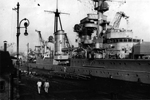

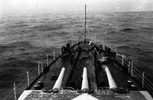

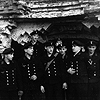
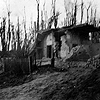
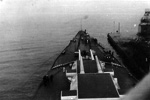
Click on the pictures to enlarge.
During the construction training time, Herbert worked in the technical office on plans for the construction of the machinery equipment, in particular the turbines, and there he was later actually assigned, turbine room - center. He was on the ship for the sea trials. He says: "We then had gunnery practice. When the 38's fired, we all had to clear the decks because of the air blasts. Some boats got crushed [he means the boats stowed onboard]." In April 1941, in the meantime the Bismarck had back in Hamburg for finishing up work and renewed sea trials in the Baltic Sea, Herbert became ill for a few days with a sore throat. And there in the ship's sickbay, the so-called "Schlenz" [sack out time], he lived through a board visit by Josef Goebels. He reports: "He asked: 'what wrong with you?' The 1st Officer Oels then told him that that the artificial ventilation [air conditioning] is to blame and that I could a cold."
A short time thereafter, Herbert was transferred and reassigned to the 2nd Admiral of the Baltic Sea Station, and subsequently, he was transferred to Hamburg to the Admiral Scheer where he was to serve in a prize crew. Then he was moved farther away to St. Nazaire, to a tanker that was supposed to sail with the Scheer. This plan was ditched and so Herbert came back to Germany, back to the 2nd Admiral of the Baltic Sea Station. Because of this, he applied for torpedo-recovery boat duty. After practice torpedo firing by the U boats at the target ships, the torpedo-recovery boats rounded up the practice torpedoes. Herbert reports: "The torpedoes (without warheads) were set for 10 meter water depth and therefore the torpedo went through under the ship. Normally this would have been a hit, if they had been properly set. There were many duds among them, either surface travelers or circlers or bottom seekers, and one time even we received a hit. Not much happened. The occurred as follows: there was a fair amount of seas, and as we heeled hard to starboard, we received the hit. Well, we had a hole about as big as the torpedo [diameter]. When the ship righted itself again, the hole was above the waterline." While performing his tour of duty in the torpedo recovery boats, Herbert was sent to Wesermünde for NCO training and was promoted to mate.
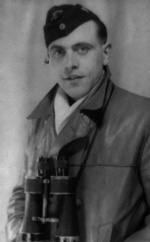 On 13 February 1943 Herbert experiences his second sinking after having been sunk in the Karlsruhe. This time he was traveling in a convoy back to Germany aboard a first world war torpedo recovery boat which had been rebuilt in Holland, although it was really no longer seaworthy. 30 nautical miles west of Terschelling (one of the last Dutch island in front of the German coast), the boat finds itself in a storm of force 11 winds. A burst pipe in the boiler renders the ship un-maneuverable. The ship drifts in the storm for 16 hours, and then the crew decided to jump into the three degree cold water. Herbert saw legs sticking out of the water, they were the legs of those who had put on their lifejackets improperly and drownd. After 1 ½ hours he was fished out of the water by a sentry boat. He had hypothermia. Today he still insists that the thick clothing saved him. Two of his comrades were washed up dead on the distant North Sea shore, and they were identified by their dog tags. The 13th of February is for Herbert like a second birthday.
On 13 February 1943 Herbert experiences his second sinking after having been sunk in the Karlsruhe. This time he was traveling in a convoy back to Germany aboard a first world war torpedo recovery boat which had been rebuilt in Holland, although it was really no longer seaworthy. 30 nautical miles west of Terschelling (one of the last Dutch island in front of the German coast), the boat finds itself in a storm of force 11 winds. A burst pipe in the boiler renders the ship un-maneuverable. The ship drifts in the storm for 16 hours, and then the crew decided to jump into the three degree cold water. Herbert saw legs sticking out of the water, they were the legs of those who had put on their lifejackets improperly and drownd. After 1 ½ hours he was fished out of the water by a sentry boat. He had hypothermia. Today he still insists that the thick clothing saved him. Two of his comrades were washed up dead on the distant North Sea shore, and they were identified by their dog tags. The 13th of February is for Herbert like a second birthday.
Picture galery – torpedo recovery boats
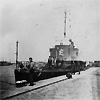
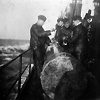
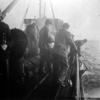
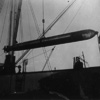
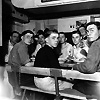
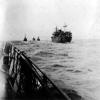

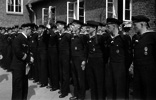


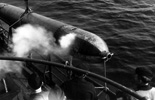

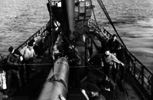
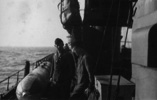

Click on the pictures to enlarge.
Towards the end of the war, Herbert participates in saving refugees from the East bringing them from Pillau to Gotenhafen and then to Swinemünde. His final assignment is to the naval tank pursuit regiment in Zewen. The war ends before he sees combat as an anti-tank gunner. Herbert, just like the entire U boat personnel, is interned. He arrives at a barracks compound of the former naval radar training section in Eiderstedt. He is released in August, but his navy service time continues: since he volunteers for the GMSA (German Minesweeping Administration) to secure the "round one". Working out of Cuxhaven, he sweeps mines off Helgoland and England. While on land liberty in Cuxhaven he meets his second wife Elfriede. As he says, his first marriage was a Sunday marriage, done during the war, they never really saw each other and after the war it was all over. Elfriede at that time is a widow; her husband went down with the Tirpitz shortly after they were married. On their second date Herbert musters up all his courage and asks her if she would marry him. Success!
|
|
|
|
In 1947 the GMSA is disbanded because of Russia's insistence and thus Herbert with Elfriede return to Hamburg to assigned living quarters, classified as "100% uninhabitable" consisting of 17 square meters and shared with three other residents. They have to adjust and make do as well as they could. At first, he finds work in a metal shop where he repairs boilers of wrecked locomotives. He is laid off and begins work at the Stülken shipyard, where he remains for 16 years. He builds exhaust pipelines for Diesel engines for various merchant ships until he is hired away by the insulation plumbers of a subcontractor, and he changes his field of work. Twelve years later, the plant starts manufacturing air-conditioning and ventilation equipment. Again Herbert changes his field of work. He continues to work until 1980 and retires at age 60. Herbert Engmann remains interested in seafaring over the years. He passes away in April 2007 at the age of 87.
|
|